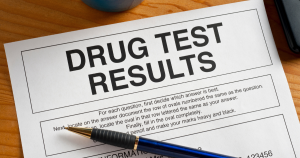By Adam Hall, Staff Writer & Editor at Current Consulting Group (CCG)
This information is provided for educational purposes only. Reader retains full responsibility for the use of the information contained herein.
History has shown that a select number of illicit substance users will do anything within their power to cheat a drug test. The unfortunate truth about the drug testing process is that it is not exceptionally difficult to influence the outcome of a test, either by adulterating a sample or substituting a sample all together. This is especially true for urine testing, which continues to be the standard method of workplace drug testing.
Despite the reality that anyone could potentially cheat a drug test, there are various barriers to combat these efforts. Beginning with an employer’s diligence in upholding a sound drug testing policy, through the actual testing process at the laboratory, there are plenty of steps throughout the drug testing process designed to thwart dishonesty. In this article we will develop an understanding of how an individual may cheat. We will also look at three primary barriers designed to uphold the integrity of the drug testing process and discuss alternatives for employers when deciding what type of testing is best for their organization.
The Mind of a Cheater
A quick internet search asking “how to cheat a drug test” will yield thousands of sites dedicated to assisting cheaters. There is a myriad of products available today with cheating in mind. Synthetic urine, a substance easily mixed with water, can be substituted into a collection container with relative ease. Concealed devices designed to maintain a certain temperature of a liquid are plentiful. There are even prosthetic devices with built-in reservoirs designed to cheat a directly observed collection. Additionally, an individual may consume a product claiming to cleanse their system of any illicit substances prior to providing a sample.
With enough motivation anyone can attempt to cheat a drug test. Despite the wide range of product options available to potential cheaters, there are barriers in place at various stages of the drug testing process. Together these barriers aim to mitigate potential cheaters and achieve desirable outcomes for employers.
Barrier #1: The Employer
The first barrier in place for stopping potential cheaters belongs to the employer. It is important that a company has a drug testing program in place. Next, it is critical to follow proper protocols when subjecting an employee or applicant to a drug test. For instance, does an applicant have a certain time frame to complete their pre-employment or random drug test? If so, the employer must hold these individuals accountable for completing their test within the appropriate window.
Following proper protocols is especially important when dealing with post-accident or reasonable suspicion situations. The best practice is to have the employee escorted by a supervisor to the collection facility immediately following the accident, or a determination that a reasonable suspicion test is needed. This is necessary so the employee does not have an opportunity to obtain a substitute sample or adulterant. Furthermore, it is far safer to escort an individual when impairment may be an issue.
Barrier #2: The Collection Facility
The second barrier occurs at the collection facility. If you have ever taken a drug test it is likely that you were given instructions by the collector. Showing valid photo identification, washing hands, emptying pockets, and removing outer clothing are all steps taken to uphold the integrity of the collection process, ultimately yielding a reliable result. Collection facilities implement additional security measures by restricting access to water sources, dying water blue, checking sample temperatures, and monitoring donors in a controlled environment. All these components of the collection process work together to thwart potential cheaters.
Barrier #3: The Laboratory
The third and final barrier of the drug testing process designed to stop an employee from cheating happens at the laboratory. In addition to testing for certain illicit substances, most samples undergo validity testing as well. There are certain known characteristics of a urine sample, and the laboratory can verify these characteristics with a series of validity tests. This process includes checking the pH of a sample, the creatinine concentration, and the specific gravity of the sample. Should any of these outcomes fall outside of the predetermined acceptable ranges, the laboratory may consider the sample to be invalid.
Depending on the nature of a drug test, an invalid result typically leads to a retest. Although this may not always be convenient for the employer and employee, it is a necessary step to ensuring that an employee truly provided their own urine sample without introducing adulterants. Additionally, these retests may be conducted under direct observation, meaning a donor must be watched while voiding their sample.
What Options Do Employers Have?
As mentioned before, these cheating techniques are primarily associated with urine testing. Because of this, many employers are turning to alternative methods of drug testing. Saliva and hair testing have grown in popularity over the last couple of decades, and both methods make cheating the test a challenge for even the most determined donor.
Although saliva and hair testing have very different outcomes as it relates to the window of detection for illicit substances, the collection process for these two methods is very similar. Every collection is completed from start to finish in full view of the collector, providing no opportunity for substituting a sample. Certain products may claim to clean an individual’s saliva, or wash out any substances from hair, but these claims are unfounded, and the reliability and integrity of saliva and hair testing continues to make these options attractive to employers.
Conclusion
Safety is the driving factor of any drug testing program, regardless of the method of testing used. Understanding how individuals may cheat a drug test, and how to mitigate those situations, is important to any employer wishing to uphold a successful program. Diligence from employers, collection facilities, and laboratories continues to make cheating difficult, but utilizing other testing options may be more appropriate depending on the goals of the company’s drug testing program.
© 2010-2022 The Current Consulting Group, LLC – No portion of this article may be reproduced, retransmitted, posted on a website, or used in any manner without the written consent of the Current Consulting Group, LLC. When permission is granted to reproduce this article in any way, full attribution to the author and copyright holder is required.














